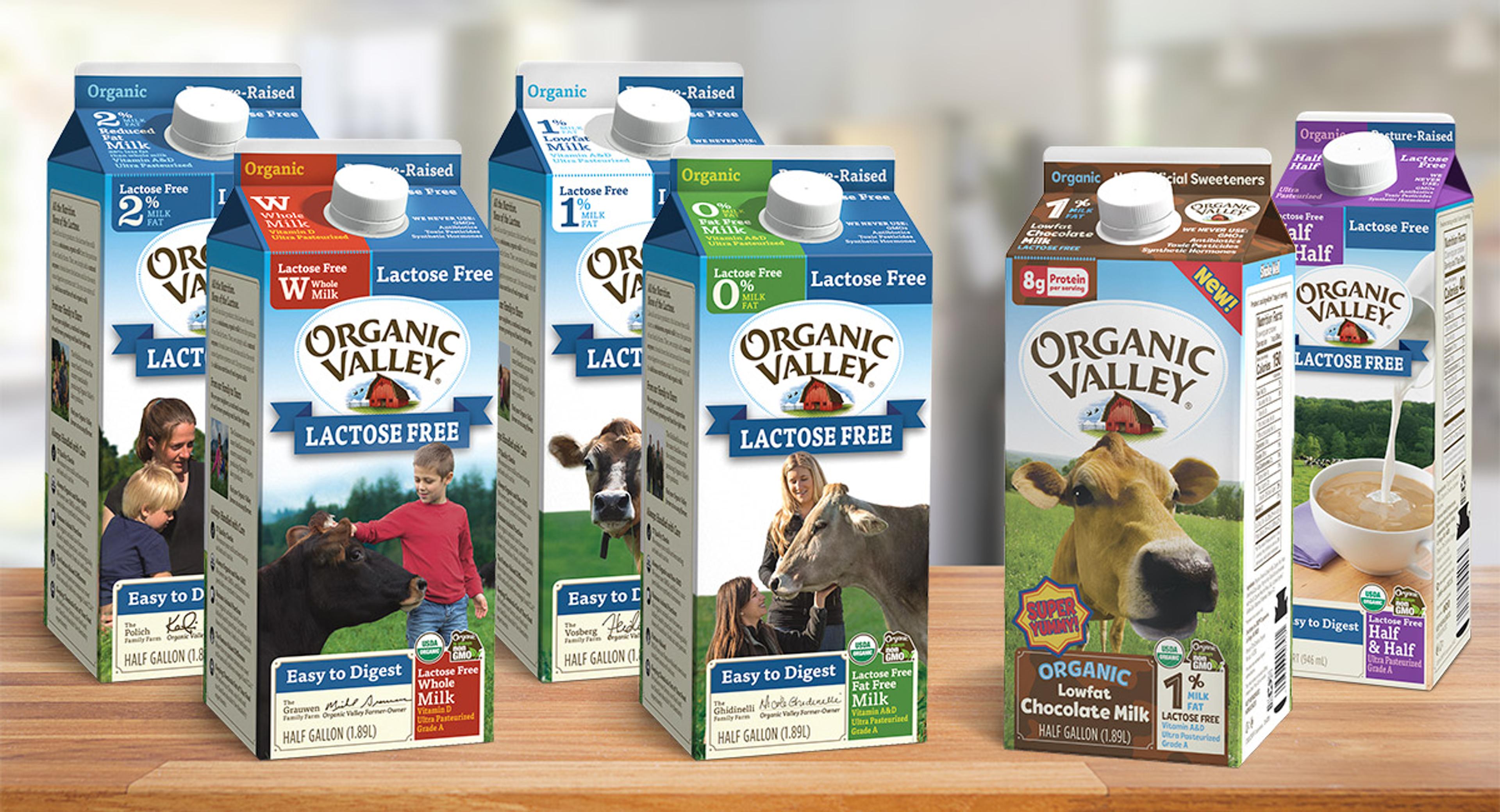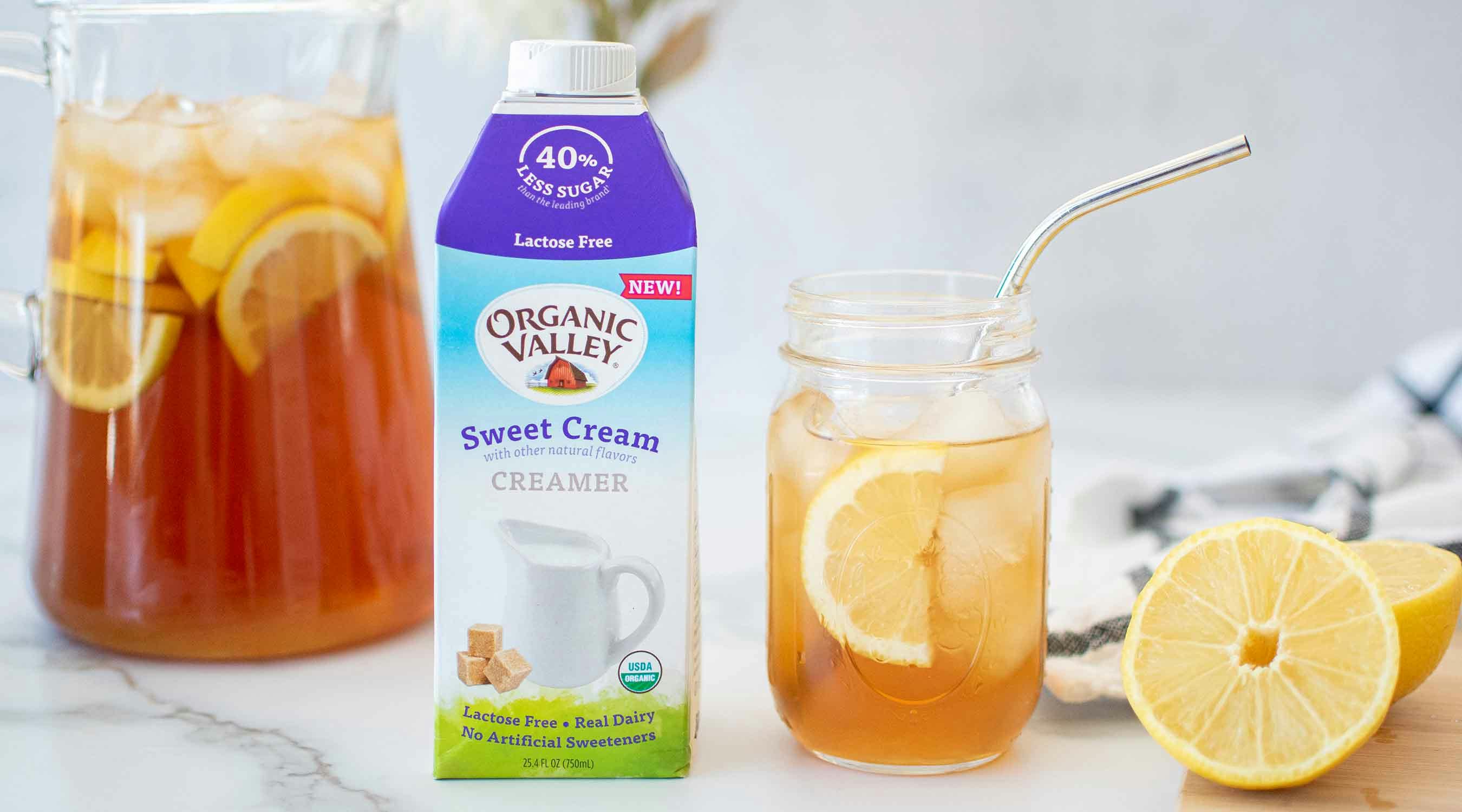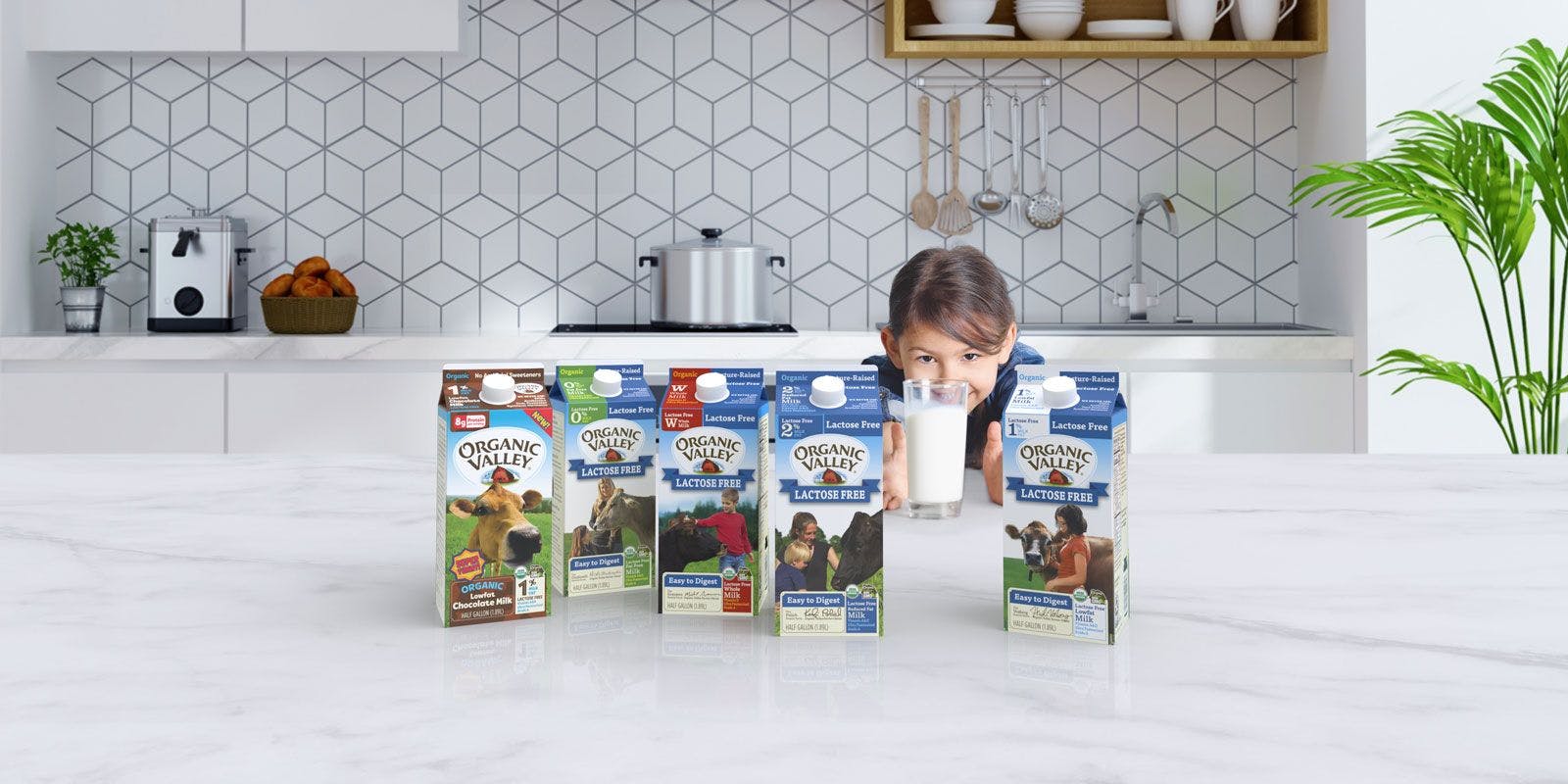
Food
How to Make Sure Your Child Gets Enough Calcium If They're Lactose Intolerant
If your child is lactose intolerant (aka, your child is unable to break down milk sugars), you may be wondering how your little one can meet their calcium needs while avoiding triggering foods that contain calcium. Rest assured, they absolutely can and it doesn’t mean they must stop eating yummy foods (they can even have certain cheeses!). If you are wondering how to get calcium without dairy, or whether kiddos with lactose intolerance can have any dairy, read on to learn more.
Calcium is incredibly important for children to support their growing bones and developing teeth, and milk and other dairy foods are some of the best sources of calcium. As a pediatric registered dietitian, I have seen my fair share of children who are unable to break down the lactose sugar and therefore follow a lactose-free diet. There are numerous ways for your kiddo to eat calcium-rich foods to support growing bones without ending up with major gastrointestinal distress.
What is Lactose Intolerance?
The term lactose intolerance is tossed around quite a bit in the nutrition world. Being lactose intolerant does not mean that a person is allergic to dairy foods nor does it mean that all dairy foods need to be avoided.
Certain dairy foods contain a natural sugar called lactose. Lactose is broken down in the body with the help of an enzyme called lactase. Some people unfortunately do not produce enough of this lactase enzyme and are therefore not able to properly break down this sugar and use it for energy. Instead, the lactose sugar stays in the gut and can result in some pretty unsavory side-effects—gas and bloating, for example.
Naturally, if a person is not able to break down the lactose sugar, their best bet is to avoid foods that contain lactose.
Do all Dairy Foods Contain Lactose?
Since milk naturally contains the lactose sugar, intuitively, it makes sense to believe that any food that is made from milk contains lactose. Thanks to the way certain dairy foods are processed, many dairy foods are lactose-free or contain very little lactose.
Some lactose-free or very low-lactose dairy foods include:
Lactose-free milk: Lactose-free milk is regular milk that is treated with lactase enzymes before it is packaged. As a result, the only thing missing from this milk is lactose! We know that milk naturally contains lactose, a sugar that not all people can break down if they are missing the lactase enzyme. But if lactase enzymes are added to milk before it is enjoyed, the lactose sugars are broken down and are essentially undetectable by the human body. What is left over is milk that is lactose-free, but with the same taste and nutrition as traditional milk.
Some cheeses: In the manufacturing process of cheese, some of the lactose is removed leaving a protein-rich food that packs a punch in the calcium department. The cultures used and steps taken during the cheese-making process impact the initial amount of lactose a cheese contains. The cultures consume the lactose over time so the longer the cheese ages, the less lactose the cheese will contain. Therefore, if a person is lactose intolerant, most young cheeses (typically softer cheeses) should be avoided.
Certain yogurts: Surely you have heard of probiotics or beneficial bacteria. Eating foods that contain live probiotics (like yogurts) has been linked to a slew of health benefits. Some yogurts are lower in lactose because those live bacteria found in this food helps break down the natural lactose sugars, making it easier for those with lactose intolerance to tolerate. Greek yogurt is particularly low in lactose, because as the yogurt is strained during processing, a significant amount of lactose is removed as a result. Greek yogurt isn’t always completely lactose-free, but it is often well-tolerated by those who are lactose intolerant.
Ghee: Ghee, or clarified butter, is butter that has been simmered and strained to remove certain components, including lactose. So, while ghee is not dairy-free, it is safe for those who are avoiding lactose. Bonus, ghee is easy to cook with and can be a substitute for butter in recipes (you should try it on popcorn!).
Lactose-Intolerant Children Can Meet Calcium Needs
As parents, we all want to make sure our kids are being supplied with enough nutrients to help them grow and develop. Calcium is a key nutrient that children need when they are young, as up to 90% of bone is built by the time a child is between the ages of 18 and 20. So, including calcium foods in a kiddo’s diet is a natural focus.
Calcium needs increase as a child gets older and ranges from 700 mg for younger children to 1,300 mg of this mineral once a child reaches the age of 9. So, how can children who can’t tolerate regular milk, ice cream, and many kinds of cheese meet their needs of this important mineral?
Thankfully, there are many easily-accessible and totally kid-friendly choices that naturally contain calcium and are acceptable for those who suffer from lactose intolerance.
Calcium-Rich, Lactose-Free Snacks
To get you started, here are some ideas for you to offer your kiddo to help them meet their quota for the day.
Organic Valley Lactose-Free Milk provides 25% of the daily value of calcium per serving. It is produced from pasture-raised cows and uses a natural process to break down the lactose sugars while still maintaining the same protein, vitamins and omega-3s as regular milk.

Organic Valley provides a number of lactose-free dairy products.
For a sweet treat, Organic Valley 1% Chocolate Milk provides the same vitamins and minerals as the Organic Valley Lactose-Free Milk, but with the kid-friendly taste of chocolate, thanks to the addition of organic fair-trade cocoa. This chocolate milk is lactose-free and provides 20% of the daily value of calcium per serving.
When lunchtime arrives, making a DIY English muffin pizza can satisfy any kiddo craving. Top a whole-grain English muffin with pizza sauce and a low-lactose cheese for an easy-breezy meal that you can make with your child’s help.
Whip up a smoothie for your little one to sip on. Using ingredients that contain calcium, like calcium-fortified orange juice and a bit of kale can give your concoction a boost of this key mineral. Fortified orange juice contains about 30% of the daily value of calcium per serving and ½ cup of chopped kale contains 5% of the daily value of this important mineral. You can also add yogurt and lactose-free milk.
What is more kid-friendly than a classic nut butter and jelly sandwich? One tablespoon of almond butter contains 5% of the daily value of calcium, and it goes oh so well with sweet and fruity homemade jam.

There are a number of ways lactose-intolerant children can get the calcium they need to stay strong and healthy.
Choosing the Right Foods
If your child experiences lactose intolerance, know that they can still meet their calcium needs with the right food choices and a little know-how. From lactose-free milk to using ghee in a instead of butter, know that there is no need to totally give up dairy if lactose is being avoided.
Having some calcium-containing food choices on hand that your child will enjoy eating while also being free from lactose is key if you are focused on meeting your child’s calcium needs. All dairy foods do not need to be avoided if you are managing lactose intolerance. Rather, choosing dairy foods that are lactose-free or extremely low in lactose is the ticket to enjoying dairy foods for children with this condition.
If your child is lactose intolerant, rest assured that they can absolutely keep their growing bones healthy simply by including certain foods in their diet.
Lauren Manaker is an award-winning registered dietitian and book author. After spending over 15 years working in health care and industry, she started a consulting business focusing on reproductive, pediatric and women’s health. Lauren resides in Charleston, South Carolina, with her husband and young daughter. In her spare time, she can be found enjoying an outdoor oyster roast in the cooler months, doing anything on the water in the warmer months, and practicing yoga year-round.
Related Articles
- Tags:
- organic nutrition,
- children,
- snacktime
















